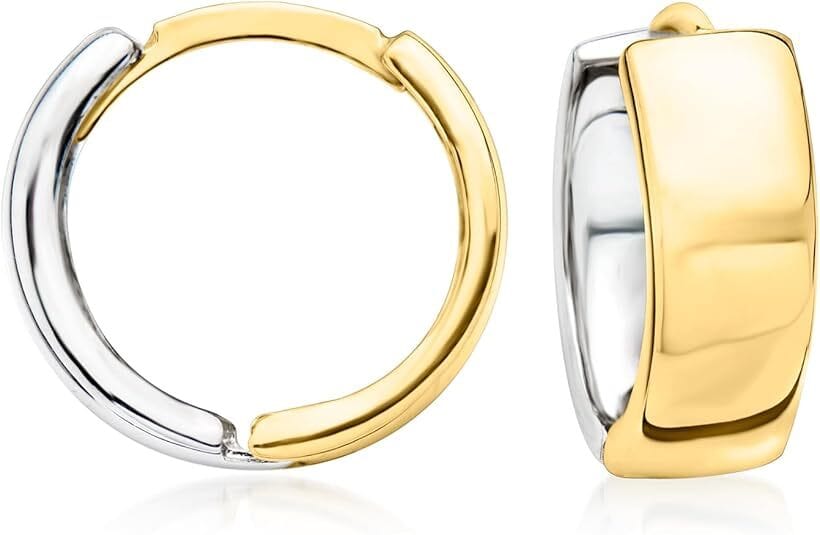- Ark's Newsletter
- Posts
- Gold Jewelry SECRETS: The Hidden Differences Between 14k, 18k, Vermeil, and Filled!
Gold Jewelry SECRETS: The Hidden Differences Between 14k, 18k, Vermeil, and Filled!
Everything you need to know to buy smarter, shine brighter, and choose the gold that’s really worth your money.

A Beginner’s Guide to Gold Jewelry: Understanding Karats, Types, and Quality
Gold jewelry has surged in popularity recently, becoming a staple in many wardrobes thanks to its timeless appeal and the accessibility offered by e-commerce brands like Mejuri, Adina’s Jewels, and Missoma. These brands have made gold jewelry more affordable compared to traditional high-end jewelers like Tiffany & Co. For newcomers to the gold jewelry market, navigating the options can be overwhelming. This guide breaks down the essentials of gold jewelry—karats, types, and quality considerations—to help you make informed purchasing decisions.

Understanding Gold Karats
The term “karat” (K) indicates the purity of gold in jewelry, with 24K being the purest form (100% gold). Lower karat numbers signify a mix of gold and other metal alloys, which enhance durability and affordability. Here’s a closer look at common carat options:
14K Gold (58.3% gold): This is a popular choice for everyday wear, such as engagement rings, due to its durability. The remaining 41.7% consists of alloys like zinc, nickel, sterling silver, or brass, making it resistant to scratches and ideal for frequent use. 14K gold also offers variety, including white gold (mixed with silver or nickel for a silvery hue) and rose gold (mixed with copper for a pinkish tone). Its affordability and versatility make it a great starting point for building a jewelry collection.
18K Gold (75% gold): With higher gold content, 18K gold is more valuable and has a richer yellow color. It’s less durable than 14K, so it’s better suited for occasional wear rather than daily use. Its higher gold content makes it more hypoallergenic, ideal for those with sensitive skin or allergies to metals like nickel. 18K gold also holds better resale value due to its purity.
24K Gold (100% gold): Pure gold is soft and prone to scratching, so 24K jewelry is rare and typically reserved for special occasions. Its rich yellow color is striking, but it requires careful handling to avoid damage.

Types of Gold Jewelry
Gold jewelry is crafted in different ways, each affecting its durability, appearance, and price. Understanding these methods is crucial when choosing pieces that align with your budget and lifestyle.
Gold-Plated Jewelry: This involves a base metal (e.g., brass) coated with a thin layer of gold through electroplating. Gold-plated jewelry is the most affordable option, offering versatility in design, such as chunky earrings or statement necklaces. However, the thin gold layer is susceptible to tarnishing, especially when exposed to moisture or wear. It typically lasts only a few wears, making it a budget-friendly choice for trying new styles but less ideal for long-term investment.
Vermeil: Vermeil is a type of gold plating with a thicker gold layer over a sterling silver base, adhering to specific standards. While more durable than standard gold-plated jewelry, vermeil can still tarnish over time, especially if the manufacturer doesn’t follow strict standards. Many e-commerce brands label items as vermeil without meeting these standards, so caution is advised unless purchasing from a reputable source.
Gold-Filled Jewelry: Gold-filled jewelry features a thicker layer of gold mechanically bonded to a base metal, making it more durable than gold-plated or vermeil options. It’s less likely to tarnish or cause allergic reactions, as the base metal doesn’t leach through. While pricier than gold-plated jewelry, it remains a mid-tier option, offering a balance of quality and affordability for those building a lasting collection.
Solid Gold Jewelry: Made entirely of gold (typically 14K or 18K), solid gold jewelry is the most expensive and durable option. It doesn’t tarnish or fade, making it a worthwhile investment for pieces you plan to wear long-term or resell. Solid gold is ideal for those prioritizing quality and longevity, such as a Tiffany & Co. 18K necklace, which offers a noticeable difference in weight and craftsmanship compared to lower-quality options.

Choosing the Right Gold Jewelry
When selecting gold jewelry, consider your budget, lifestyle, and preferences:
For Everyday Wear: Opt for 14K solid gold or gold-filled jewelry for durability and affordability. These options withstand daily activities and are less likely to scratch or tarnish.
For Sensitive Skin: Choose 18K solid gold or gold-filled jewelry to minimize allergic reactions due to lower alloy content.
For Occasional Wear or Statement Pieces: Gold-plated or vermeil jewelry can be great for experimenting with trends, but be prepared for potential tarnishing.
For Investment: Solid gold, especially 18K, offers the best resale value and timeless quality.
Personal Recommendations and Experiences
As someone building a gold jewelry collection on a budget, I’ve explored various options. Gold-filled jewelry, like earrings and necklaces from small businesses such as Skin Studio in Melbourne, Australia, has proven to be a great middle ground—offering quality without the high cost of solid gold. On the other hand, vermeil pieces from brands like Mejuri tarnished quickly, suggesting that their dainty designs may not justify the price for long-term wear. For a special occasion, I recently received an 18K solid gold necklace from Tiffany & Co., and the quality difference is undeniable—its weight and craftsmanship make it a treasured piece.
Conclusion
Gold jewelry is a versatile and stylish addition to any collection, but understanding karats and manufacturing methods is key to making smart purchases. Whether you’re drawn to the affordability of gold-plated pieces, the durability of gold-filled options, or the luxury of solid gold, there’s something for every budget and style. By prioritizing quality and aligning your choices with your needs, you can build a collection that’s both beautiful and lasting. Share your favorite gold jewelry finds or questions in the comments, and let’s keep the conversation going!
